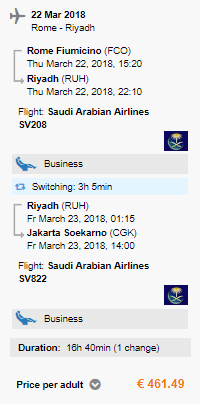JAKARTA -- The Finance Ministry and the central bank of Indonesia are reviving a plan to redenominate the country's currency.
Rupiah bank notes come in much higher denominations than other currencies within the Group of 20 major economies, and officials at the ministry and Bank Indonesia have called for the introduction of a new rupiah at 1,000 to one against the old currency.
But people close to President Joko Widodo and government officials as a whole have been, at best, lukewarm on the plan, arguing it would bring unnecessary confusion to the country's economy.
Many have pointed to the disastrous 1965 redenomination as an example, when the economy was thrown into chaos and resulted in the collapse of the administration.
Over the years, the denominations of rupiah bank notes have been rapidly raised in response to inflation and the plunge in value of the currency during the Asian financial crisis.
A Starbucks caffe latte now costs 33,000 rupiah ($2.48), while the price of a Toyota Motor's Avanza starts at around 189 million rupiah. The nation's budget in fiscal 2017 stands at 2,070 trillion rupiah.
The huge denominations often results in mistakes and questionable bills. Surprised at a bill of 92 million rupiah for six-months of language lessons, one housewife said she got in touch with the school and was told the correct amount was actually 9.2 million rupiah.
In 2010, the then-governor of the central bank declared the start of feasibility studies looking at redenomination.
In July, Finance Minister Sri Mulyani Indrawati told parliament she was considering adding the redenomination of the rupiah to a set of bills for priority examination over the next fiscal year.
Lawmakers, however, seem to have a polar opposite view to Sri Mulyani, an economist who is not a member of parliament. Widodo will seek re-election in 2019 and his supporters fear that the potential confusion involved carries immense political risks.
"Redenomination at this time is impossible," said a member of the administration.
As the process involves changing the face value of bank notes and coins, the value of the currency neither rises nor falls against other currencies, nor does the value of assets change.
Past experience
On Dec. 13, 1965, the administration of President Sukarno announced its decision to redenominate the rupiah. At that time, Sukarno was losing his grip on power. As commander of the army strategic command, Suharto quelled a coup in September that year and was swiftly gaining power and influence. He later became president of Indonesia.
Social confusion was widespread. Large numbers of people linked with the communist party were killed for alleged involvement in the coup.
The Indonesian economy was in turmoil and the value of the rupiah plunged. Fighting inflation was imperative as prices for goods and services soared at a rate of 600% during the year.
Redenomination was seen as the quick remedy, just as it had been when Germany brought hyperinflation under control after World War I. For Sukarno, however, it proved catastrophic.
"Markets in Jakarta were thrown into bewilderment and became almost panic-stricken," read reports in the Dec. 15 morning edition of The Nikkei.
"Army vans drove around with megaphones and called for people to remain composed, stressing that old bank notes are valid" and "prices were rising 10% to 30% in Jakarta," the paper reported over the next ten days.
The whole process merely fueled inflation as stores took to price-gouging and withholding merchandise. The government threatened merchants with severe punishments, including the death penalty at special trials.
But the price hikes were not simply a case of profiteering. Store owners were forced to raise prices because the government had introduced a "revolution donation" program aimed at collecting 10% of the face value of the new rupiah when converted.
The ensuing chaos resulted in the collapse of the Sukarno regime.
Bureaucrats and senior central bank officials stress that the stability of Indonesia's macroeconomy today would insulate the country from a similar reaction.
The country's gross domestic product has been growing steadily at a rate of about 5%, while inflation of around 4% is within the central bank's target.
Advocates of redenomination also want to raise the value of the rupiah in order to make the currency at least appear stronger and announce the country's arrival as a major economic power.
The plan being put together foresees the introduction of a new rupiah at 1,000 to one against the current currency over six years.
Compared with Turkey's redenomination in 2005, when the old lira remained legal tender for one year, the plan looks an extremely cautious one.
The authorities approach is clearly aimed at not repeating the debacle of 1965. Needless to say, the plan calls for a charge-free exchange of old bank notes.
But while paying for groceries in thousands may seem inconvenient, redenomination is far from a matter of urgency for most citizens. People are accustomed to removing last three zeros in their minds, if not from the actual price tag. A latte at Starbucks, for example, is listed as costing 33 instead of 33,000.
Source:
Indonesian bureaucrats revive redenomination plan





 JAKARTA: A man was shot dead when he attacked two policemen with a knife after prayers at Faletehan Mosque, located near the police headquarters, South Jakarta, last night.
JAKARTA: A man was shot dead when he attacked two policemen with a knife after prayers at Faletehan Mosque, located near the police headquarters, South Jakarta, last night.